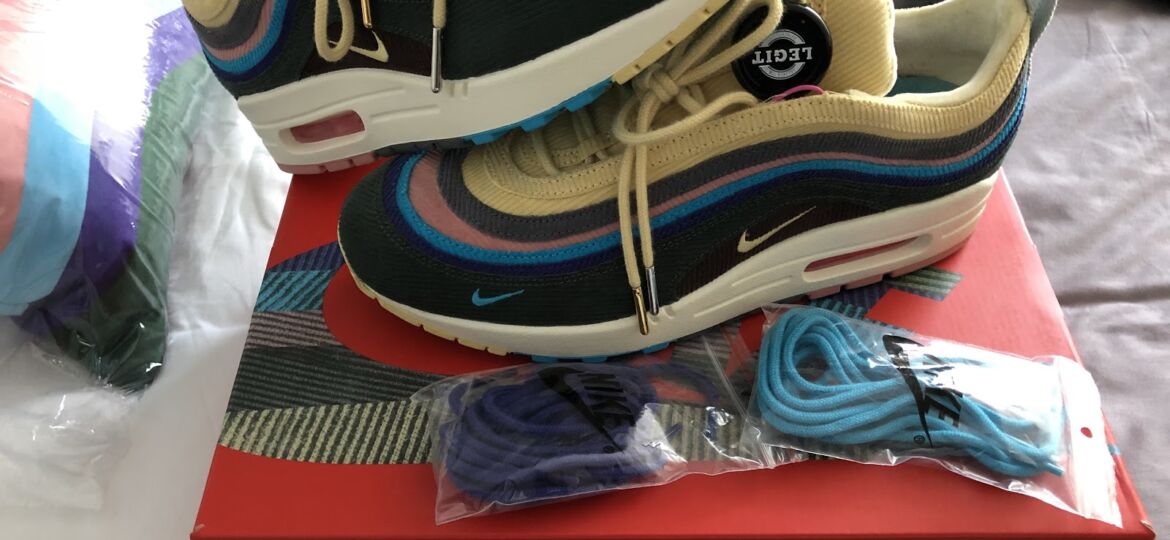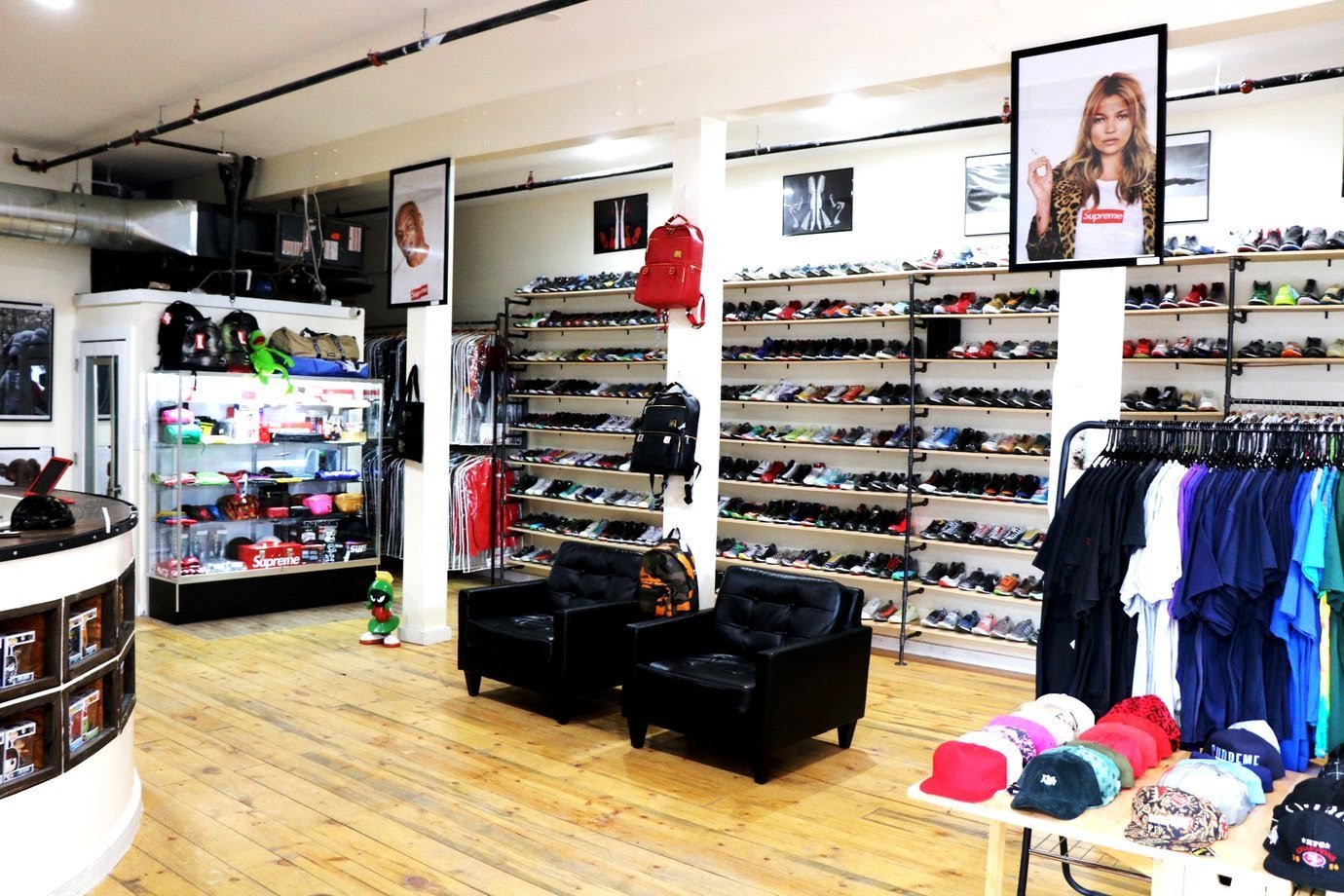
Sneaker Culture and Hype: The Connection that Ties a Community

Sneaker culture has exploded in the last 20 years, enough so that people like Braeden Banza, a student at the University of Colorado Boulder, will spend an arm and a leg to get some of the most coveted sneakers on the market. Banza can regularly be found in Denver’s sneaker boutique and streetwear shop, Vices, where he meticulously scopes out not just the newest sneakers to add to his collection, but the ones with the most hype — a term that has been the defining mark for sneaker culture and the driving force in the multibillion-dollar market.
“Hype really has to do with brilliant marketing and influential people,” said Noe Magdaleno, co-owner of Vices, on the significance of the term ‘hype.’
In front of a wall displaying rare sneakers and hyped streetwear worth thousands of dollars, Magdaleno sat at the center of his store. I recognize some of these prized pieces, being that I’m also a sneakerhead. Passionate collectors, also known as “sneakerheads,” are bonded by a strong sense of personal connection made possible through hype. Vices a system to entice people like Banza to walk into their store. Magdaleno understands the inner workings of how hype drives the market through his knowledge of the most popular collections.
According to Magdaleno, one of the most hyped collections in recent memory is the Nike Off-White collection, because of the designer. Virgil Abloh is the men’s head designer at Louis Vuitton and CEO of the brand Off -White. Abloh also has connections with popular hip-hop artists such as Kanye West, Kid Cudi and many more. In addition to making a product limited, Magdaleno said hype was built by taking an influential person and capitalizing on a marketing campaign.
“If something’s harder to get, the hype goes through the roof,” said Magdaleno. “And if it’s a little easier to obtain, people kind of forget about it.”
Hype is connected to the beginnings of sneaker culture, when Michael Jordan took the world by storm in 1985. Jordan signed a deal with Nike during his rookie season and the Jordan 1 became the most wanted sneaker around the world. Many other brands such as Converse, Adidas and Reebok hurried to sign other athletes to make their own shoes while Jordan Brand continued to create iconic silhouettes.
“Sneaker culture itself has been around for a long time,” Magdaleno said. “It ultimately was started by people who were just enthusiastic about the newest sneakers coming out, whether they were basketball shoes or something more fashionable.”
Everyone looked to get the latest and greatest, and as time passed it became much more than just buying a pair of sneakers.
“Now that it’s [sneaker culture] evolved, it’s become this phenomenon, like a community,” Magdaleno said, “everybody wants to be a part of that now, because it’s all about hype; it’s all about exclusivity; it’s all about networking and meeting people who share that common interest.”
For most members of the community, the infatuation with sneakers starts at a young age. There is a moment, when you are sitting in a store with your parents, scoping out which sneaker will be yours— that will always stick in your memory. Everyone can remember a pair of sneakers that they loved and always wore, whether they were the day-to-day pair or the ones to wear during sports games.
“My whole life, I have always been into shoes,” said Banza, who sat next to his closet in his colorfully lit college dorm room. “Back in elementary school, I always wondered what was hype back then. At the time it was the Reebok ZigTech.”
I sat and realized that this was a sneaker that I too had fallen in love with the innovative foam sole that caught many eyes.
“I remember those!” I responded, telling him that I had to break the dress code at the charter school I went to in order to wear them. We both laughed thinking about the things we would have to do to wear the best sneakers when we were young.
“It was always just the cool hype thing man,” Banza said. “It grew into other shoes, I started to learn more about it, and began to respect the culture as I got older.”

Sneaker culture can hold a very special place in people’s hearts. That sharing of stories is what it’s all about. Banza and I connected through a shoe from our young memory. At that moment, I just smiled. Those stories are shared around the world between members of the community.
That is why the community has gained such a large following, which has created the multi-billion sneaker market. “In 2017, the total global sneakers market was valued at approximately 62.5 billion U.S. dollars and was forecast to reach a value of 97.8 billion U.S. dollars by 2024,” according to Emma Bedford from Statista. Sneaker culture is more than sales numbers; it is about sharing stories. Being engrained in sneaker culture is more than just liking a pair of shoes. It’s a way to express yourself as a person and feel a sense of belonging to the sneaker collective. The sense of community gained justifies the price of the sneakers.
“Every sneaker that I own I think of it as owning a piece of art with a background story,” Banza said, as he waved his hand towards his shoe rack. “All these shoes mean something to me, regardless if the price tag is high or low.” He then grabbed one of his most prized possessions, the Nike Air Max 1/97 Sean Wotherspoon.

The pinnacle of Banza’s experience within the culture was when he got to meet one of his idols, Sean Wotherspoon, the designer of the shoe itself. On a trip to Los Angeles that past Summer he went to Wotherspoons’s notorious store, Round Two, and surprisingly found the famous designer behind the counter.
“He was a really cool person and was down to earth,” Banza said. Having that experience is one of the primary reasons why he had to go and spend the exorbitant price for that shoe. He said that, “It’s an expensive shoe with an amazing design… But it has a story. This is why I love both sneakers and the culture.”
Sneaker culture has a place for everyone and anyone is welcome. Being able to be a part of a community like this is so special and it’s not going away anytime soon.
“It really is like an art that can represent so many different things; but in the end, everyone comes together for the sole purpose of shoes,” said Banza. “It’s just a cool community that includes many backgrounds and diversities. It’s something that I am proud to be a part of.”

